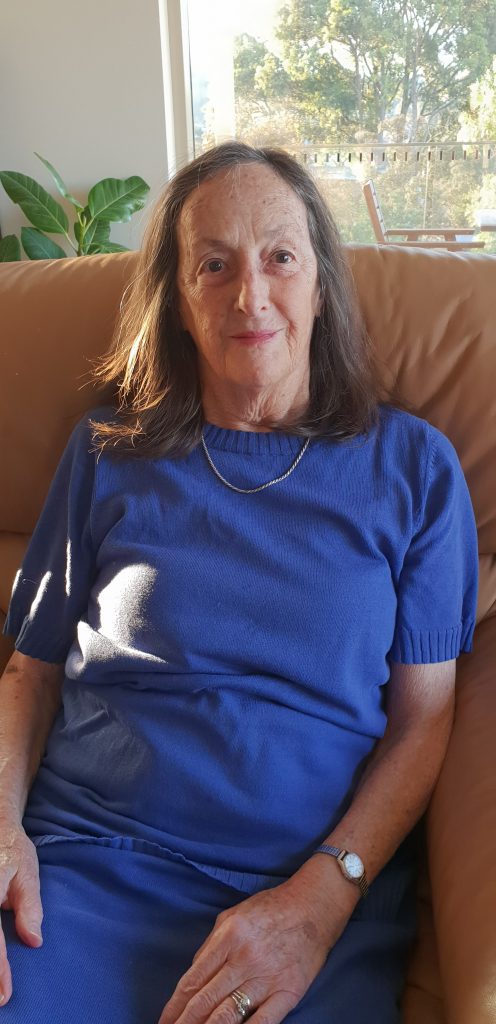When the frigid winter winds sweep into Tasmania and wood heater smoke fills the air, retiree Mary Keller knows it’s time to keep her doors and windows sealed and guard her lungs until warmer weather returns.
The reason for Mary’s extreme caution is her asthma, which was only recently diagnosed at age 72. This is known as adult-onset asthma.
“It was never in our family, I never had it as a child or anything, and it was totally unexpected,” Mary explained.
“I just noticed a couple of years ago, when I walked uphill I was puffed, when I walked up the stairs I was puffing, and when I was doing a bit of gardening, puff puff, and I thought, ‘Heavens, maybe there’s something wrong with my heart’.”

A visit to her doctor, who did a lung function test, confirmed that Mary had asthma.
“I just thought, ‘Goodness, that’s a bit late in the piece to be getting something like that’. I always thought it was a childhood disease because I know some of my friends when I was at school, they had it,” Mary said.
“Well, I’ve always been a bit of a late developer, I must say,” she added with a laugh. “So maybe that’s part of it.”
As recent Census health data confirms, asthma is most common in childhood up to age 14. But it can emerge at any age, even in a person’s 50s, 60s, and 70s. It is now one of the most common three health conditions in Australia, behind only arthritis and mental illness.
There are nearly 2.8 million people in Australia with diagnosed asthma, and many more who, like Mary initially did, ignore their symptoms under the belief their breathlessness is due to poor fitness.
“The thing is, if people do feel puffed, they need to seek their doctor’s advice earlier rather than later.”
Asthma Australia recommends anyone, but particularly adults aged over 50, who are getting out of breath more often, to not accept it as ‘a normal part of aging’. Talk to a doctor, to check for conditions like asthma.
Thankfully for Mary, her doctor recognised her symptoms and took her new health challenges seriously. He prescribed a reliever, which Mary uses as needed, and a preventer for morning and night. It helps reduce her risk of flare-ups – and as for her environmental triggers, she avoids those as best she can.
“I was surprised, and I thought, ‘Why am I getting it now, in my dotage?’, but I’m managing it – I just have to keep away from the woodfire heaters, from breathing in the smoke, and the other thing that affects me too is the cold.”
“And we’ve had a lot of cold weather lately and consequently there’s a lot of wood smoke about the place.”
“I’m avoiding it as much as I can – and looking forward to summer.”
People can stay connected with Asthma Australia by signing up to onAir, our regular e-newsletter that aims to support you in better managing your asthma. Click here to sign up.
Further support is available by calling our free information and support service to speak with an Asthma Educator about your asthma, they operate 9:00 am – 5:00 pm Monday to Friday. Our Asthma Educators know when to listen, and are here to empower you to better manage your asthma, so you can live a life free from its restraints. For information click here.
Breathing challenges like asthma can stifle every part of life. Mary’s awareness and understanding of her asthma means it is well controlled and impacts to her life are reduced.
If you experience breathing problems, talk about it with your doctor. The right advice can help you live successfully with asthma.
For more information about living with asthma, visit the Asthma Australia website: https://asthma.org.au/treatment-diagnosis/live-with-asthma/





 1800 278 462
1800 278 462


